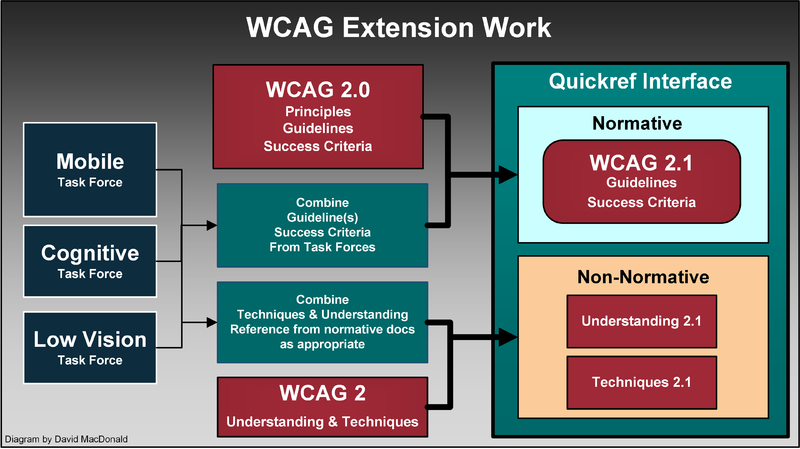WCAG Next Possible Models/Model 5
WCAG 2.1 by Readiness, one time release with all task forces weighing in
This model proposes a release of A WCAG 2.x, as a one time update that is *not* based so much on a shipping deadline, but rather waits for each task forces to divide their output into candidate new Success Criteria, and best practices, and these have been vetted by the larger group to ensure:
- They are suitable, reasonable, testable requirements
- Wording for Success Criteria, consistent with the current document.
- The don't collide with other SC's from other task forces.
- They can be incorporated into the other Success Criteria without undue disruption to the existing standard.
Where there is a collision between two new Success Criteria from different task forces, the Success Criteria will be combined, and the language massaged so the needs of both task forces are met.
Best Practices
Some of the recommendations from the task forces cannot meet the rigorous demands of the Success Criteria listed above. These recommendations may become Best Practices. Best practices should be given a new special place in the WCAG 2.1, to raise their profile without making them requirements. This will help proliferate techniques which cannot meet the strict constraints of success criteria above. This may help previous issues of very good techniques that cannot be testable, become more widely used. All work would be done under the existing Charter. Then integrate all at once under new charter, next year WCAG 2.1
Feedback on this potential model (or other potential models) can be submitted to w3c-wai-ig@w3.org with the Subject Line: WCAG Next Possible Models
Information on how to join the WAI-IG mailing list can be found at https://www.w3.org/WAI/IG/#mailinglist
| WCAG next model | Pros | Cons | Observations |
|---|---|---|---|
| WCAG 2.x One time amalgamation |
|
|
